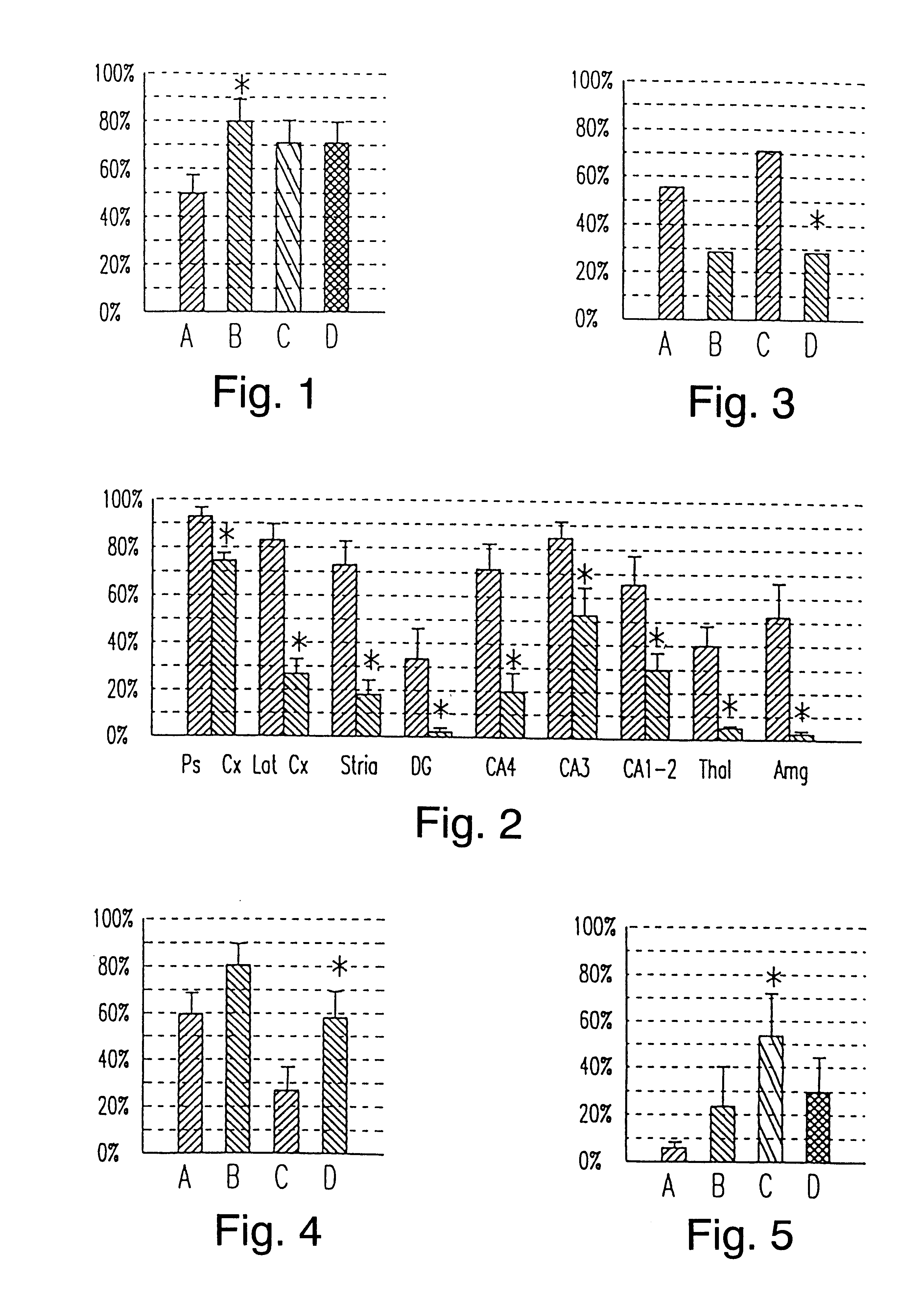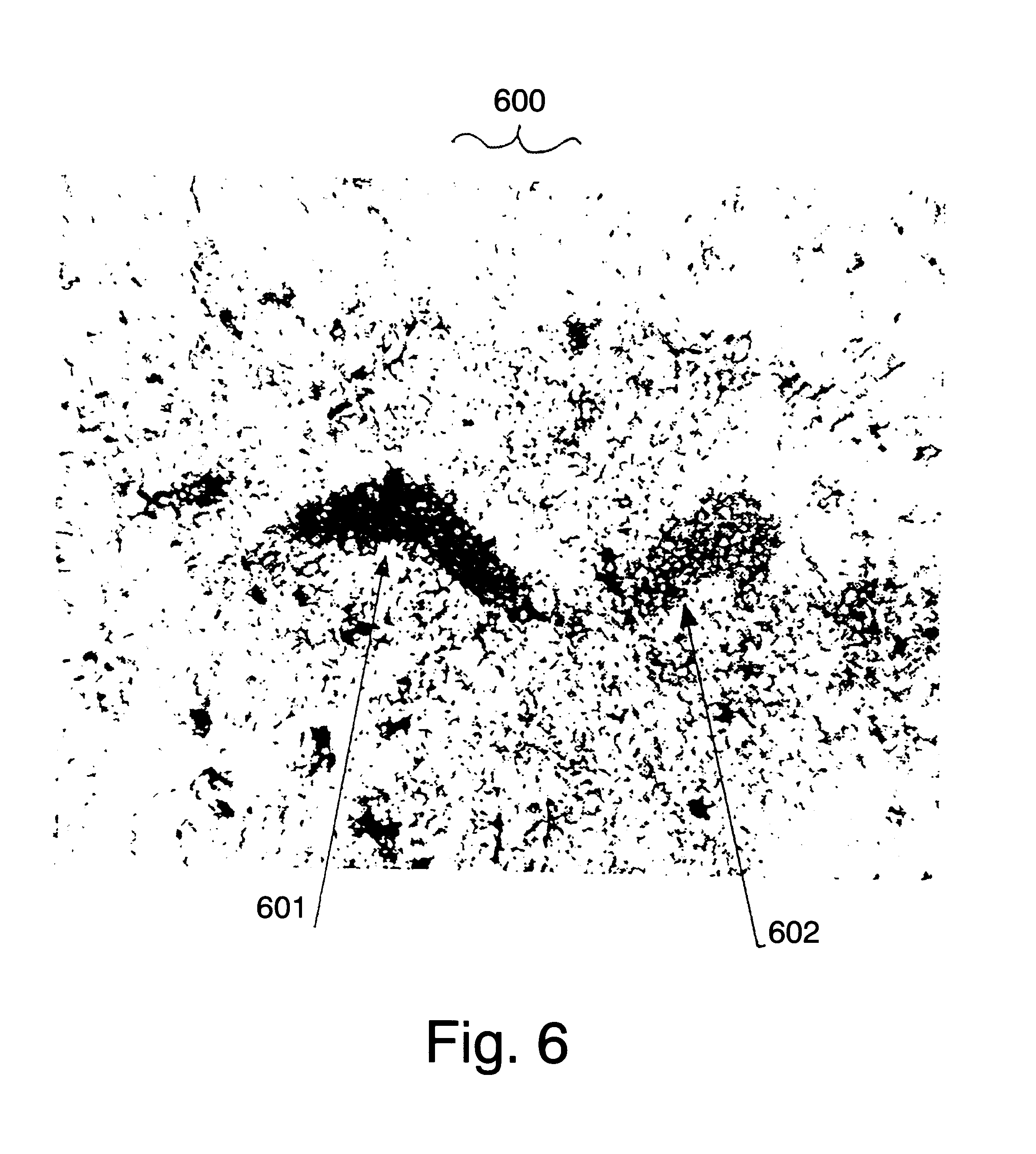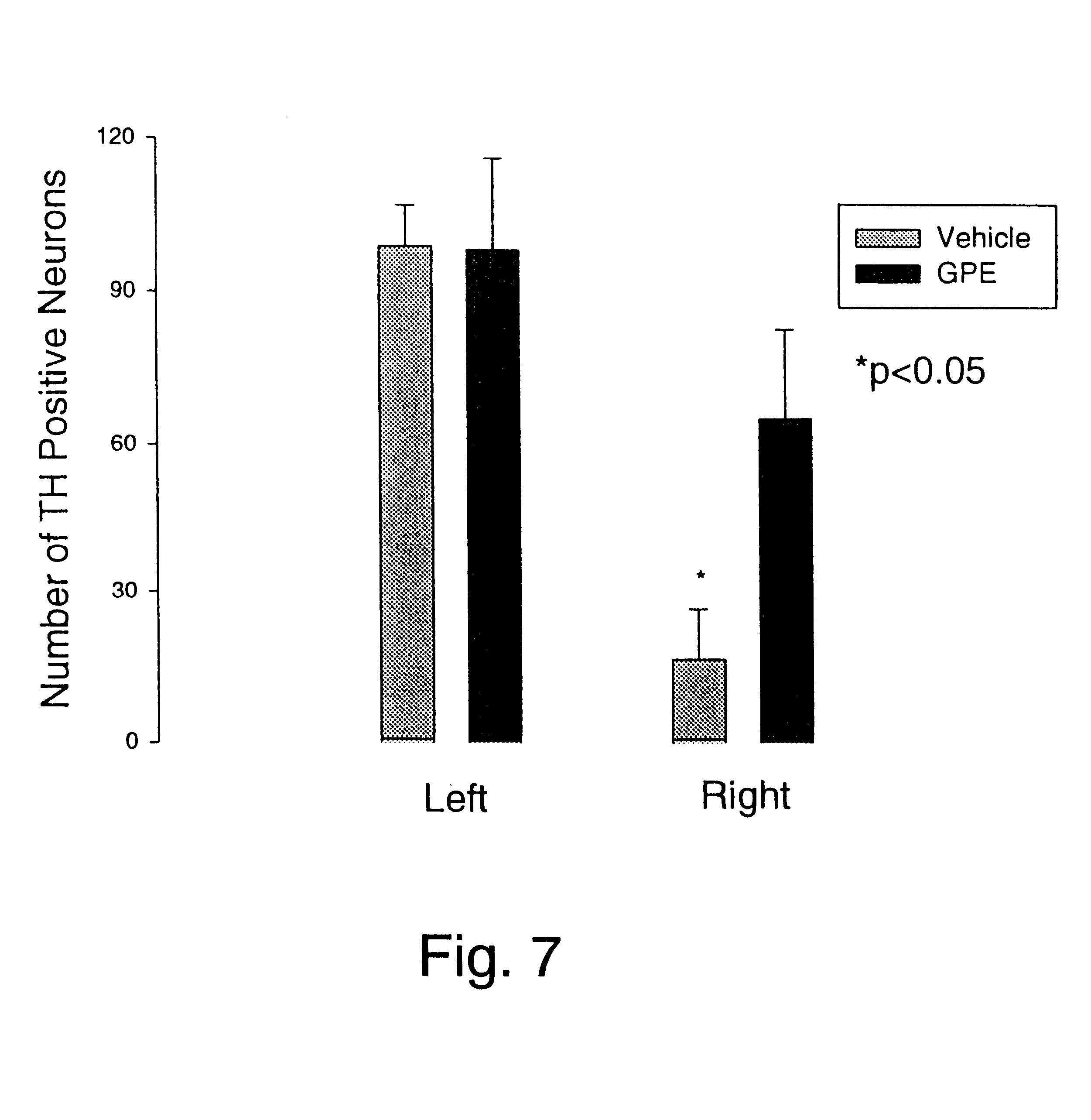Methods to improve neural outcome
a neural outcome and neural technology, applied in the direction of peptide/protein ingredients, immunoglobulins, peptides, etc., can solve the problems of severe brain injury, permanent loss of function, children whose brains have been damaged,
- Summary
- Abstract
- Description
- Claims
- Application Information
AI Technical Summary
Benefits of technology
Problems solved by technology
Method used
Image
Examples
experiment 1
The objective of this study was to compare the effects of administering IGF-1 and the NMDA receptor antagonist MK801 after a CNS injury in order to clarify the site of action of IGF-1. The experiments involved treating the rats with vehicle, IGF-1, MK801 or IGF-1 plus MK801 2 hours after a CNS injury. These rats had an hypoxic-ischemic injury to one cerebral hemisphere induced in a standard manner. One carotid artery was ligated and the animal was subjected two hours later to a defined period of inhalational hypoxia. The degree, length of hypoxia, ambient temperature and humidity were defined to standardise the degree of damage. They were sacrificed five days later for histological analysis using stains (acid-fuchsin) specific for necrotic neurons. In such experimental cell death typically is restricted to the side of the side of arterial ligation and is primarily in the hippocampus, dentate gyrus and lateral cortex of the ligand hemisphere.
Adult Wistar rats (68 280-320 g) were prep...
experiment 2
The objective of this study was to compare the effects of treatment either with IGF-1 (see FIG. 2) and previously published work with the NMDA antagonist MK810 after an ischemic brain injury on postischemic seizures and neuronal losses in fetal sheep. (Tan et al Ann Neurol 32:677-682 (1992)).
The methods were those of an earlier study (Tan et al Ann Neurol 32:677-682 (1992)). Briefly, late gestation fetal sheep were chronically instrumented to record EEG, nuchal activity and blood pressure, and were then returned to the uterus. Cortical EEG activity nuchal activity and blood pressure were recorded throughout he experiment and the fetal brain subjected to 30 minutes of ischemia. Two hours later they were treated by an infusion of either 1 .mu.g IGF-1 (n=6) or vehicle (artificial CSF) (n=6) into the lateral ventricle. Five days later the brains were fixed and assessed for neuronal loss as described previously (Tan et al Ann Neurol 32:677-682 (1992)).
FIG. 2 shows the neuronal loss score...
experiment 3
The objective of this study was to compare the effects of treatment with GPE to that of vehicle given 2 hours after a hypoxic-ischemic brain injury.
The dose of 3 .mu.m of GPE was chosen to be equivalent to that present in 50 .mu.g of IGF-1 which has previously been shown to be neuroprotective (Guan et al J Cereb Blood Flow Metab. 13:609-616 (1993)). Unilateral hypoxic-ischemic injury was induced in adult 300.+-.10 g) male Wistar rats. The rats underwent unilateral carotid ligation under light halothane anaesthesia. Following one hour recovery they were placed in an incubator at 34C at 85.+-.5% humidity for one hour before injury. They were subjected to 10 min inhalational asphyxia (FiO2 6.0%) and maintained in the incubator for one hour after asphyxia. Two hours after the termination of the inhalation injury, a single stereotaxically controlled lateral cerebroventricular injection of either 3 .mu.GPE (n=15) or phosphate buffered saline alone (n=15) was given. The animals were then m...
PUM
| Property | Measurement | Unit |
|---|---|---|
| body weight | aaaaa | aaaaa |
| body weight | aaaaa | aaaaa |
| temperature | aaaaa | aaaaa |
Abstract
Description
Claims
Application Information
 Login to View More
Login to View More - R&D
- Intellectual Property
- Life Sciences
- Materials
- Tech Scout
- Unparalleled Data Quality
- Higher Quality Content
- 60% Fewer Hallucinations
Browse by: Latest US Patents, China's latest patents, Technical Efficacy Thesaurus, Application Domain, Technology Topic, Popular Technical Reports.
© 2025 PatSnap. All rights reserved.Legal|Privacy policy|Modern Slavery Act Transparency Statement|Sitemap|About US| Contact US: help@patsnap.com



